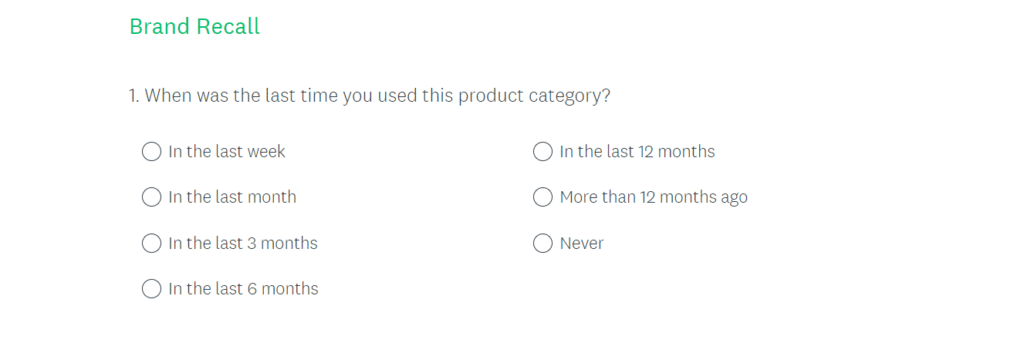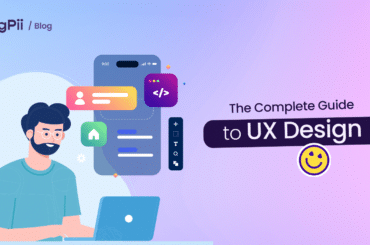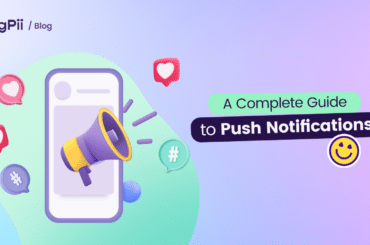Ever wondered how companies know exactly what we like or dislike about their products? It’s not magic – it’s user surveys! These handy tools are essential for businesses to understand what makes us tick.
By asking the right questions, companies can gather valuable insights into our behavior and preferences, helping them make improvements that keep us happy.
When it comes to surveys, not all questions are the same. You’ve probably come across open-ended and close-ended questions without even realizing it.
Open-ended questions are like a friendly chat, inviting you to share your thoughts in detail. On the other hand, close-ended questions are more like a quick poll, giving you a set of predefined options to choose from.
Both types have their place in surveys, and knowing when to use each can make a big difference in the quality of the feedback you gather. Let’s dive in and explore these two question types!
What are open-ended questions?
Open-ended questions are a type of survey question that allows respondents to answer in their own words. These questions do not provide predefined response options, allowing respondents to express their thoughts, feelings, and experiences in detail.
This approach encourages more comprehensive and nuanced answers, providing richer insights than close-ended questions that often have a single word answer.
Advantages of Open-Ended Questions
When you leverage the benefits of open-ended questions, you can comprehensively understand your users, uncover hidden issues, and gather detailed feedback to drive meaningful improvements in your products or services.
-
Deep Insights
Open-ended questions allow for gathering deep insights into respondents’ thoughts and feelings. Since no predefined options exist, respondents can elaborate on their experiences and share intricate details.
For instance, asking, “What do you think about our customer service?” allows users to provide specific examples and stories, giving you a thorough understanding of their experiences and perceptions.
-
Uncover Unanticipated Issues
One of the significant benefits of open-ended questions is their ability to uncover unanticipated issues. Respondents may reveal problems or concerns that the survey designers must consider.
This can lead to discovering new areas for improvement or innovation. For example, a question like “Can you describe any challenges you faced while using our product?” might highlight issues not previously on your radar.
-
Rich Qualitative Data
The responses to open-ended questions are typically rich in qualitative data. This type of data includes detailed descriptions, personal anecdotes, and nuanced feedback that can provide a deeper understanding of the respondent’s perspective.
Unlike quantitative data, which focuses on numbers and statistics, qualitative data offers context and depth, making it easier to understand the underlying reasons behind user behavior. This richness of data is invaluable for crafting more empathetic and user-centered solutions.
-
Encourage Detailed Feedback
Open-ended questions encourage respondents to provide detailed feedback rather than simple yes or no answers. This detailed feedback can reveal specific aspects of the user experience that are particularly impactful.
For example, asking, “What improvements would you suggest for our service?” prompts users to think critically and provide thoughtful suggestions, often leading to actionable insights that can directly inform product or service enhancements.
-
Flexibility in Responses
A question like “How does our product fit into your daily routine?” can yield many different answers, helping you understand how various users interact with your product in different contexts.
The flexibility offered by open-ended questions allows respondents to express themselves freely without being confined to a set of predefined answers. This can result in a wide variety of responses, capturing your audience’s diverse perspectives and experiences.
Disadvantages of Open-Ended Questions
Understanding these disadvantages helps design more effective surveys by balancing the depth of information sought with the practicalities of data collection and analysis.
While open-ended questions offer rich insights, knowing their limitations ensures they are used appropriately within the survey design.
-
Time-Consuming Analysis
Analyzing responses to open-ended questions can be quite time-consuming. Since these questions elicit detailed, narrative responses, each answer must be read, understood, and categorized.
Unlike close-ended questions, which can be quickly tallied and analyzed using software, open-ended responses often require manual review.
-
Potential for Off-Topic Answers
Open-ended questions can lead to responses that deviate from the survey’s primary focus. Because respondents are free to answer in their own words, they might provide information that is irrelevant to the question asked.
-
Subjectivity in Interpretation
The interpretation of open-ended responses can be highly subjective. Different analysts might interpret the same response in different ways, leading to inconsistencies in the data analysis.
This subjectivity can be mitigated by using clear coding schemes and multiple reviewers, but it still presents a challenge compared to the straightforward analysis of close-ended questions.
-
Lower Response Rates
Respondents are often less inclined to answer open-ended questions than close-ended ones because they require more effort and time. This can result in lower response rates for surveys that rely heavily on open-ended questions.
-
Difficult to Quantify
Quantifying the data from open-ended questions is inherently challenging. While close-ended questions can be easily tallied and statistically analyzed, the qualitative nature of open-ended responses requires different techniques.
These responses must be categorized and coded to identify patterns and themes, which can then be quantified. However, this process is less straightforward and can introduce additional complexities.
When to ask open-ended questions
When you strategically use open-ended questions in the contexts we discuss here, you can gather richer, more detailed insights for making informed decisions and improving user experiences.
-
During Interviews
Open-ended questions are particularly effective during interviews. Whether conducted in person, over the phone, or via video calls, interviews provide a setting where respondents can freely share their thoughts and experiences.
Asking open-ended questions such as “Can you tell me about a time when you used our product?” allows interviewers to delve deeper into user experiences, uncovering rich details that structured questions might miss.
-
Post-Launch Feedback
After launching a new product or feature, gathering feedback is crucial to assess its impact and identify areas for improvement. Open-ended questions in post-launch surveys or feedback forms can provide valuable insights into user reactions.
Questions like “What do you think about our new feature?” or “How has the new update affected your experience?” allow users to express their opinions in detail, highlighting strengths and areas needing attention.
-
Exploratory Surveys
Exploratory surveys aim to gather broad insights and understand user behavior, preferences, and needs. Open-ended questions are ideal for this purpose as they allow respondents to provide detailed and varied responses.
-
User Journey Mapping
Understanding the entire user journey is crucial for identifying touchpoints and potential areas for improvement. Open-ended questions can be used to map out the user experience in detail.
-
Follow-Up to Close-Ended Questions
Open-ended questions are also effective as follow-ups to close-ended questions. A follow-up open-ended question can provide additional context and depth after a respondent selects an option in a close-ended question.
For instance, if a survey includes the question “Are you satisfied with our customer service? (Yes/No),” a follow-up question like “Can you explain why you feel this way?” allows respondents to elaborate on their answers.
Examples of Open-ended Questions
- What do you think about our new feature?
- Can you describe a challenge you faced while using our product?
- What improvements would you suggest for our service?
- How do you feel about the user interface of our app?
- What features do you find most valuable and why?
- Can you tell us about a time when our product exceeded your expectations?
- What changes would make our product more useful to you?
- How does our product fit into your daily routine?
- What other products do you use alongside ours, and why?
- Can you describe any difficulties you experienced while using our product?
What are Close-ended Questions?
Close-ended questions are a type of survey question that restricts respondents to a set of predefined answers. These questions are designed to collect quantitative data, making analyzing and comparing responses easier.
Close-ended questions can take various forms, including multiple choice answers, yes/no, rating, and Likert scales.
Advantages of Open-Ended Questions
Open-ended questions help you comprehensively understand your users, uncover hidden issues, and gather customer feedback that can drive meaningful improvements in your products or services.
-
Ease of Analysis
One of the primary advantages of close-ended questions is the ease of analysis. Since respondents select from a predetermined set of answers, the data can be quickly quantified and analyzed using statistical methods.
This allows for efficient processing of large volumes of responses, making it easier to identify trends, patterns, and correlations in numerical data. For example, responses to a multiple-choice question can be easily counted and converted into percentages or other statistical measures, providing clear insights.
-
High Response Rates
Close-ended questions typically result in higher response rates compared to open-ended questions. Respondents are more likely to complete the survey because they are straightforward and require less effort to answer.
-
Consistency in Data
Close-ended questions ensure consistency in the data collected. Since all respondents choose from the same set of options, the variability in responses is minimized.
This consistency is crucial for reliable data analysis, as it reduces the likelihood of misinterpretation and makes it easier to compare responses across different demographics or periods.
-
Efficient Data Collection
The structured nature of close-ended questions allows for efficient data collection. Surveys featuring close-ended questions can be administered quickly and are often compatible with automated data collection tools.
This efficiency benefits large-scale surveys, where rapid data collection is necessary to meet tight deadlines or respond to evolving situations.
-
Reduced Ambiguity
Close-ended survey questions reduce ambiguity by providing clear and specific answer choices. This clarity helps ensure respondents understand the questions uniformly, providing more accurate and reliable data. When your survey limits the scope of possible answers, close-ended questions minimize the risk of varied interpretations, a common issue with open-ended questions.
Disadvantages of Open-Ended Questions
While close-ended questions are efficient for collecting quantitative data, knowing their limitations is essential for designing balanced surveys that capture the depth and context needed for a holistic understanding of user feedback.
-
Limited Depth of Responses
One of the main drawbacks of close-ended questions is that they often result in limited depth of responses. Since respondents are restricted to predefined options, they cannot elaborate on their answers or provide additional context.
This limitation can prevent researchers from comprehensively understanding the respondents’ thoughts and experiences.
-
Potential Bias in Provided Options
Close-ended questions can introduce bias through the provided options. The way choices are framed can influence respondents’ answers, leading to skewed data. If the answer choices do not cover the full range of possible responses, respondents might select an option that doesn’t fully reflect their true opinion.
-
Lack of Context
Close-ended questions often fail to capture the context behind respondents’ answers. While they provide clear and quantifiable data, they don’t reveal the reasons or circumstances that led to a particular response.
This lack of context can make understanding the underlying factors driving user behavior or opinions challenging.
-
Risk of Over-Simplification
Close-ended questions can oversimplify the data by reducing complex opinions and behaviors to simple choices. This oversimplification can lead to conclusions that do not accurately reflect the nuances of user experiences.
For instance, a rating scale from 1 to 5 might not capture the complexity of a user’s satisfaction with a multi-faceted service, leading to generalized customer insights that overlook important details.
-
Reduced Insight into Emotions
Close-ended questions often fail to capture the emotional responses of respondents. Emotions play a crucial role in shaping user experiences and decision-making processes, and the restrictive nature of close-ended questions can limit the ability to understand these emotional aspects.
When to ask close-ended questions
-
During Quantitative Surveys
Close-ended questions are highly effective in quantitative research and surveys where the goal is to gather measurable data. These questions provide clear, structured responses that can be easily quantified and statistically analyzed.
-
For Benchmarking and Tracking
Close-ended questions are invaluable when you need to track performance over time or benchmark against industry standards. They provide consistent, comparable data points that can be measured regularly.
For instance, asking “How likely are you to recommend our product to a friend? (1-10 scale)” on a quarterly basis allows you to monitor changes in customer satisfaction and track your Net Promoter Score (NPS) over time, helping you gauge improvements or declines in user sentiment.
-
In Quick Feedback Forms
Close-ended questions are ideal for quick feedback forms, especially when respondents will likely have limited time. These forms often appear after specific interactions, such as completing a purchase or using a new feature.
Questions like “Did you find what you were looking for? (Yes/No)” or “How would you rate your experience today? (1-5 scale)” can capture immediate feedback efficiently, providing actionable insights without requiring significant effort from respondents.
-
When Testing Specific Features
When evaluating specific features or aspects of a product, close-ended questions provide clear, focused data that can be directly tied to those features.
-
In Large-Scale Surveys
When evaluating specific features or aspects of a product, close-ended questions provide clear, focused data that can be directly tied to those features.
Examples of close-ended questions
- How would you rate our new feature? (1-5 scale)
- Did you encounter any challenges while using our product? (Yes/No)
- Which area of our service would you like to see improvements in? (Customer service, Product quality, Delivery time, Other).
- How satisfied are you with the user interface of our app? (Very satisfied, Satisfied, Neutral, Dissatisfied, Very dissatisfied).
- Which feature do you find most valuable? (Feature A, Feature B, Feature C)
- Has our product ever exceeded your expectations? (Yes/No)
- Would any of these changes make our product more useful to you? (Improved speed, Better design, More features, Other).
- How often do you use our product? (Daily, Weekly, Monthly, Rarely)
- Do you use any of these products alongside ours? (Product X, Product Y, Product Z, None)
- Did you experience any difficulties while using our product? If yes, please select the type of difficulty. (Technical issues, User interface problems, Other).
Open-Ended vs. Close-Ended Questions
|
Aspect |
Open-Ended Questions |
Close-ended Questions |
|
Response Type |
Detailed, descriptive answers |
Specific, predefined answers |
|
Depth of Information |
Provides rich, qualitative insights |
Provides quantitative data |
|
Flexibility |
Allows respondents to answer freely |
Limits responses to available options |
|
Ease of Analysis |
Requires extensive qualitative analysis |
Easy to analyze and compare |
|
Engagement |
Can engage respondents in deeper thinking |
Quick and easy for respondents to complete |
|
Response Rate |
Potentially lower due to the effort required |
Generally higher due to simplicity |
|
Contextual Understanding |
Offers context and reasoning behind responses |
Offers clear, concise data points |
How open-ended and close-ended questions go hand in hand
While open-ended and close-ended questions have distinct advantages and limitations, using them together can provide a balanced approach to gathering user feedback.
Open-ended questions allow for detailed insights and uncover unexpected issues, while close-ended questions facilitate easy data analysis and comparison.
Combining both types allows you to gather comprehensive data that offers depth and breadth, giving you a more nuanced understanding of user experiences and preferences.
This approach enables you to validate hypotheses with quantitative data and explore new ideas with qualitative insights, making your surveys more effective and preliminary research more informative.





